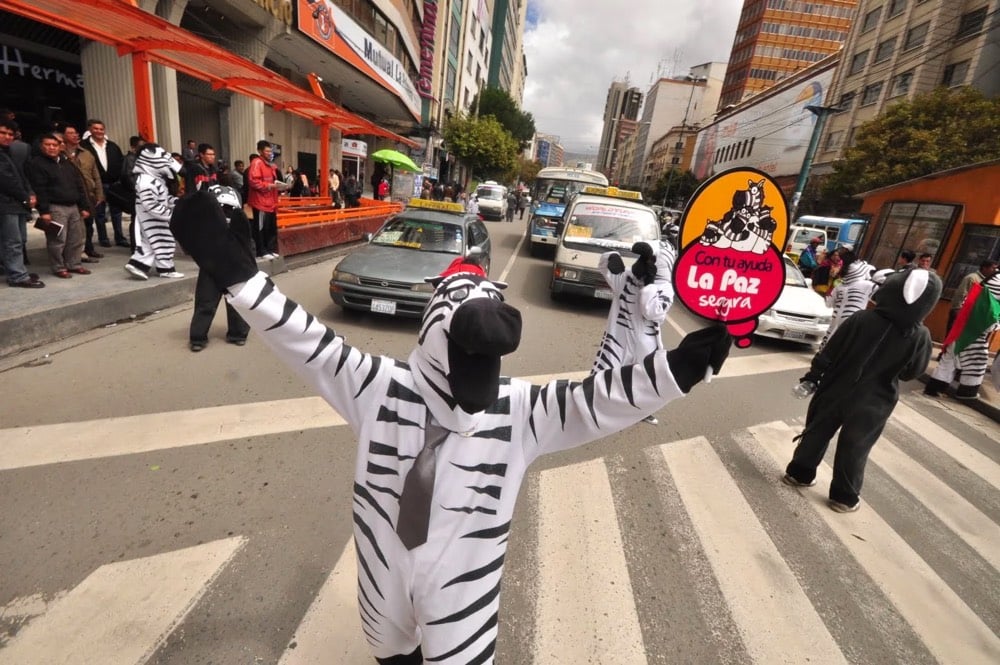Urban Nudges
Urban Nudges is a site that documents small efforts by cities and the people who live in them to slightly change the behaviors of their inhabitants in some way. A 2008 book by Richard Thaler and Cass Sunstein defines a nudge as “any aspect of the choice architecture that alters people’s behavior in a predictable way without forbidding any options or significantly changing their economic incentives”. That sounds a bit academic but some examples from the site clarify things. For instance, protected bike lanes encourage bike riding:
The study “Lessons from the Green Lanes: Evaluating Protected Bike Lanes in the U.S.” was conducted in eight protected bike lanes in Austin, Chicago, Portland, San Francisco, and Washington, DC and the major findings were that bike lanes induced new bikers, mostly because they feel safer about the experience.
The researchers interviewed 2,283 cyclists using the bike lanes and found out that nearly ten percent of the users would have taken another mode of transportation if the bike lane hadn’t existed and around one percent of the interviewed said they would not have taken the trip at all.
Dancing zebras in Bolivia cajole motorists into minding crosswalks and other rules of the street:

Inspired by the Colombian experience, in Bolivia the Department of transportation developed a program where urban educators get dressed as zebras, teaching children and adults urban values through empathy and comedy. The project’s initial concept was to teach pedestrians and drivers the appropriate use of the pedestrian crossing and reduce congestion: urban zebras rejoice when pedestrians wait for green light and grab their head in agony when pedestrians jaywalk. Empathy, humility and comedy made them popular.
A speedometer in Amsterdam raises money for the neighborhood when drivers do the speed limit:
Every driver that passes by the speedometer below the speed limit of 30 km per hour raises EUR0,03 for the neighborhood. “The city’s slogan: Max 30 — Save for the Neighborhood” (Pop Up City). The money raised by this initiative is granted by the city of Amsterdam and is meant to be invested in local community projects.
What kind of nudges could you imagine in your town or city?





Stay Connected